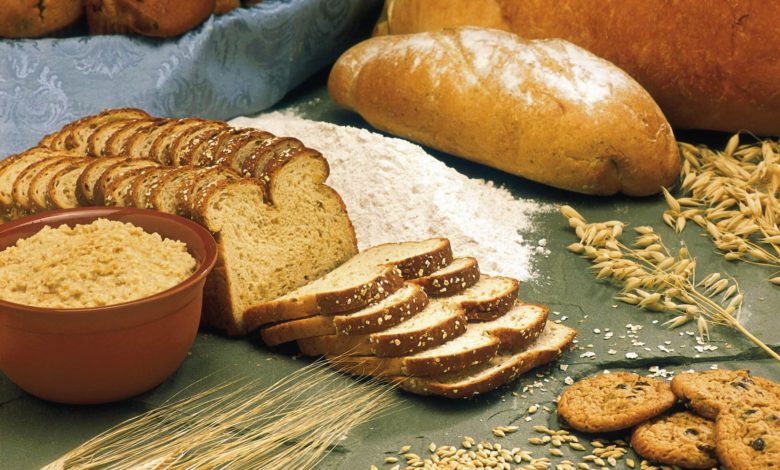Things to Know About Oats and Gluten

Oats are generally known as one of the healthiest breakfast options around. He is confused about how oats are made and what makes it different from other grains, including wheat. One of the most curious is whether oats contain gluten. This article contains information about how oats are obtained, their benefits and whether they are gluten-free:
Oats and Wheat
Derived from the plant with the scientific name Avena sativa, oats are a type of whole grain cereal grown for seeds. Can oatmeal be eaten on a gluten-free diet? For those who wonder, in some cases the answer to this question is yes. Even if it is thought that it is time to stop consuming oats due to gluten, there is no need to ban all oats.
Wheat, barley and rye grains are three whole grain groups that naturally contain protein gluten. Oats contain a protein called avenin instead of the gluten found in other grains. While oats itself do not contain gluten, in most cases they are grown in the same soils and alternately with gluten-containing grains (wheat, barley, and rye). Gluten grains can grow inside oat crops if planted in the field the previous year, in which case the oats will be contaminated with gluten.
Although oats are considered unprocessed whole grains and have some health benefits that wheat generally does not have, even whole grains are recommended to be consumed in moderation. Although oats have a rich nutrient content, they can cause digestive problems. Because when consumed too much, it can cause blood sugar imbalance and weight gain.
Oats on the Stage of History
Oats have been consumed for thousands of years. In addition to providing important nutrients to growing populations, it has historically been an important place for feeding livestock. Evidence suggests that wild oats first grew in the Fertile Crescent of the Near East, but people did not domesticate these grains in Europe until the Bronze Age. For years, oatmeal has even been used for medicinal purposes for reasons such as a natural remedy for osteoporosis and urinary tract infections and helping to balance women’s menstrual cycles.
Oats have many uses around the world, beyond being the basis of a simple breakfast. For example, oat bread has been an important food for many cultures living in Europe for hundreds of years, especially the British, Irish and Scots. It is also used in a variety of bakery products around the world, such as oat cakes, oatmeal cookies and oat bread.
Is Oats Gluten Free?
According to the University of Chicago Celiac Disease Center, oats are a gluten-free grain. In terms of structure, it is a gluten-free grain type. Certified, gluten-free oats are considered safe for most people with gluten allergies, also called celiac disease. They are also easier to digest for most people and less likely to cause adverse reactions than some other grains, so they tend to be tolerated by those with gluten intolerance symptoms as well, as long as they are careful about how oats are produced. According to research reports, it was found that perhaps less than 1 percent of celiac patients had a large amount of oat reaction in their diets.
If someone who knows that they have a gluten allergy wishes to consume this grain, it is recommended that rye be purchased from a reliable supplier that will not mix it with barley. And when buying this, it is safest to turn to products labeled as gluten-free oatmeal.
Nutritional Values of Oats
Oatmeal is one of the most popular whole grain recipes worldwide, and for good reason. Oat grains are a good source of fiber, trace minerals, and even plant-based protein. Consistently consuming gluten-free oatmeal is an effective way to get iron, selenium, magnesium, B vitamins. This is why the American Heart Association considers oatmeal to be a certified heart-healthy food.
Like all grains, oatmeal contains some healthy fatty acids because all the pulp, endosperm, and bran of the grain remain intact. This is where not only nutrients but also small amounts of essential fats are stored. Half a cup (about 40 grams) of normally dried or instant oatmeal (makes about a cup of cooked oatmeal) contains approximately:
- 154 calories
- 28 grams of carbohydrate
- 5-6 grams of protein
- 1-2 grams of fat
- 4-5 grams of fiber
- 5 milligrams manganese (73 percent DV)
- 166 milligrams of phosphorus (16 percent)
- 7 milligrams selenium (16 percent)
- 56 milligrams of magnesium (14 percent)
- 0.19 milligram thiamine (12 percent)
- 7 milligrams iron (10 percent)
- 5 milligrams zinc (10 percent)
- 0.16 milligram copper (8 percent)
- 0.45 milligram pantothenic acid
Benefits of Oats
Helps Lower Cholesterol
Oatmeal contains soluble fiber, especially beta-glucans, that can naturally help lower cholesterol when eaten several times a week or more. B-glucan is a soluble dietary fiber found in the endosperm cell walls of oats, which is praised for its cholesterol-lowering and insulin-regulating properties. In fact, because they contain more soluble fiber than many other grains, oats are one of the most recommended grains for lowering LDL (“bad”) cholesterol, total cholesterol levels, and heart disease risk.
According to the US Food and Drug Administration, a high-fiber diet (containing only three grams of less soluble fiber per day from whole grains) can reduce the risk of heart disease. Studies show that people who consume whole grains like oats and consume lots of fiber from whole foods are more likely to maintain better cardiovascular health in addition to a healthier body weight.
One reason for this to be true is not only the presence of fiber, but also the fact that it contains healthy compounds associated with decreased inflammation levels, decreased hypertension and disease prevention. The fiber we obtain from these grains swells in the digestive system, absorbs water and takes waste and excess cholesterol particles with it.
Oats Gives A Feeling Full
Whole grains contain more vitamins and minerals as well as more belly-filling fiber compared to processed and refined cereal grains or carbohydrates. The outer sheath contains a soluble fiber called bran. Oats contain around 55 percent soluble fiber and 45 percent insoluble fiber. It is more than a fiber organizer. High fiber foods take up a large amount of space in the stomach while absorbing water. Thus, they help to feel full despite being low in calories.
Can oats make you fat or will oats help you lose weight? Oatmeal helps the person to cope with the desire to eat while making him feel full. Thus, it also helps to lose weight. Some studies have found that short and long-term oatmeal intake has significant effects on controlling hyperglycemia, lowering blood lipids, and weight loss.
However, an interesting thing to note is that if oatmeal is regularly consumed for breakfast, some protein and fat should be added to keep you full longer. While oats can feel dense and filling, they are not enough to keep the person full on their own, a higher protein breakfast is required. For example, a 2017 study found that compared to an oatmeal breakfast, two eggs a day did not adversely affect the biomarkers associated with cardiovascular disease risk in healthy adults, but increased satiety throughout the day.
Helps Improve Digestion
Fiber can help maintain regular bowel movements. Since it cannot digest dietary fiber from whole foods, it cleanses the digestive system and attracts toxins and waste with it. Many studies show that diets higher in fiber help improve gut and colon health, relieve constipation, and reduce symptoms associated with irritable bowl syndrome. When consuming oats, it is necessary to pay attention to water intake in order to benefit from the benefits at the maximum level.
Boosts Immunity
It has been determined that beta-glucans, which are natural polysaccharides contained in foods that do not contain preservatives, such as mushrooms and oats, increase immunity by helping fight bacterial infections and reduce inflammation levels. They do this by activating specific immune responses, particularly white blood cells called macrophages, which fight fungi, bacteria, and toxins. In fact, consuming foods rich in beta-glucan is linked to the ability to naturally fight cancer cells. Beta-glucans have been shown to have anticarcinogenic abilities and could potentially help reduce cancerous tumor growth.
Has a Low Glycemic Score
Processed oats or oatmeal (unsweetened and unflavored type) have a low score on the glycemic index, especially when compared to enriched or refined carbohydrates. This means they can prevent spikes and dips in energy, as shown in both human and animal studies. Oatmeal provides slow-release carbohydrates that keep blood sugar in check and support sustainable energy. Whole grains can also increase insulin sensitivity. This is one reason why they are linked to lower rates of diabetes and other chronic diseases. A 2018 study found that a two-day oatmeal cycle resulted in a fairly significant reduction in required daily insulin doses in patients with type 2 diabetes while maintaining adequate metabolic control compared to a diet adapted to diabetes alone.
Provides Trace Minerals Like Manganese and Phosphorus
Half a cup of oatmeal meets approximately 73 percent of the daily manganese need and 16 percent of the daily phosphorus need. Manganese is important for maintaining a healthy bone structure, as it plays a role in creating the enzymes necessary for bones to build. It also plays a role in the metabolism, energy level, balance of the brain and hormones. Phosphorus is a very important nutrient for bone health as well as protecting teeth and gums. Phosphorus-rich foods can contribute to healthy growth and development, and foods high in phosphorus regulate the digestion of nutrients and support skeletal, bone, kidney, muscle, heart and nerve functions.
Oatmeal is also a good source of selenium, magnesium, iron, copper and B vitamins. Foods containing these nutrients prevent deficiencies that can cause a slow metabolism, anemia, poor energy, brain fog, mood swings, and pain or aches.
High Source of Protein
Whole grains are a good source of plant-based protein, weighing more than eight grams in every 2/3 of a cup of oatmeal, more than you can find in nearly all grains. It can make a hearty breakfast that provides antioxidant and energizing nutrients along with fruit, raw milk or yogurt.
Risks and Side Effects of Oats Consumption
Although oats are a gluten-free grain, some symptoms can sometimes be experienced when eating gluten-free cereals. Potential side effects of oats can include gastrointestinal issues such as bloating, cramping, or diarrhea. This may be due to the high level of fiber found in these grains. It is more likely to be a problem for people who are not used to eating high-fiber foods very often. However, these symptoms usually disappear after a certain period of time. In addition, soaking the night before or consuming with plenty of water can help get rid of this bloating problem. Like all other whole grains, soaked oats help reduce antinutrients and enzymes that can impair nutrient absorption and digestion.





